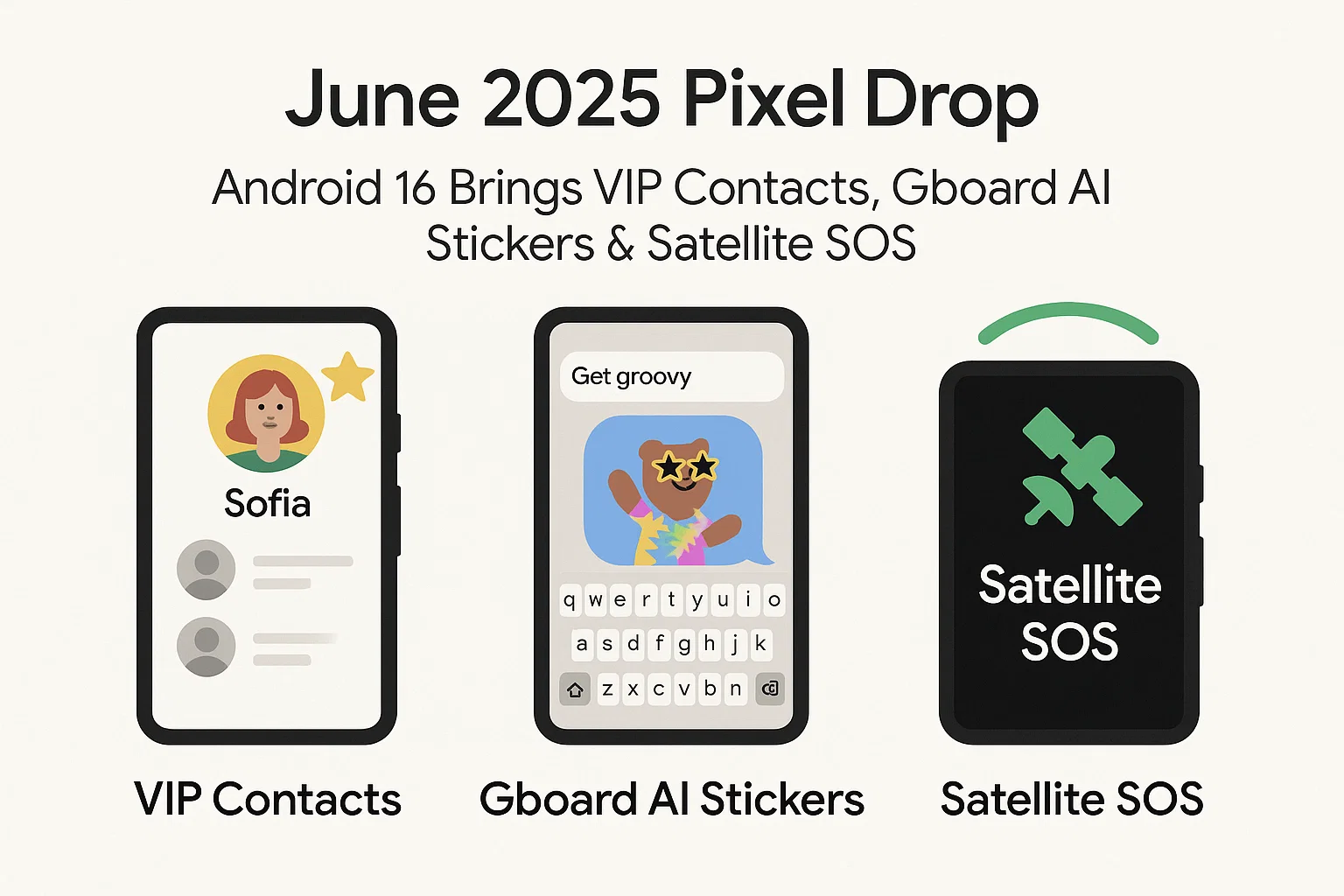Introduction: The Rise of Deepfakes in the AI Era
As artificial intelligence technologies evolve, so too do the tools used to manipulate reality. In 2025, deepfakes have become one of the most controversial and disruptive innovations of our digital age. These hyper-realistic fake videos, created using deep learning techniques, can show people saying or doing things they never did. From impersonating celebrities and politicians to crafting realistic scam videos, deepfakes are challenging the very foundation of trust in digital content.
Deepfakes were once easy to spot. Early attempts had glitches, odd facial movements, or robotic voices. But today, with advancements in generative adversarial networks (GANs), voice cloning, and high-resolution video synthesis, deepfakes are almost indistinguishable from real footage. This has made them both powerful and dangerous, used for entertainment, marketing, misinformation, identity theft, and even cyber warfare.
In this tutorial-style guide, we’ll dive into what deepfakes are, how they are created in 2025, why they’re so convincing, how to detect them using current tools and techniques, and—most importantly—how to protect yourself and your organization against them.
What Are Deepfakes? A Modern Definition
Deepfakes are synthetic media—typically videos or audio clips—generated or altered using AI technologies, particularly deep learning. The word “deepfake” is a blend of “deep learning” and “fake.” These media artifacts simulate real people’s appearances, movements, and voices, making it seem as if they said or did things that never happened. In 2025, the most advanced deepfakes can be rendered in real-time with minimal data and can adapt to facial expressions, lighting conditions, and vocal tones almost perfectly.
Originally used for parody and entertainment, deepfakes have rapidly found their way into more harmful applications. Political propaganda, misinformation campaigns, fraudulent business schemes, and revenge content have all been linked to deepfake technology. As access to these tools becomes more democratized through open-source platforms and AI-as-a-service tools, the urgency to detect and defend against deepfakes has reached critical levels.
How Deepfakes Are Made in 2025

In 2025, deepfake creation tools are more user-friendly, automated, and efficient than ever. At the core of these systems are generative adversarial networks (GANs), which use two neural networks—a generator and a discriminator—in a loop to improve the realism of generated content.
The process usually involves training a model using a large dataset of images or videos of the target person. Once the model has learned their facial patterns, movements, and expressions, it can generate video frames that replace another person’s face or animate the target’s face with custom speech.
Newer tools integrate voice cloning technologies to replicate speech, including tone, accent, and inflection. Combined with text-to-speech (TTS) and voice-to-voice transfer tools, a user can now type a script and have the AI-generated persona deliver it in their cloned voice.
Some platforms even support real-time face and voice swaps in video calls, making impersonation a live threat. These capabilities have far outpaced the average person’s ability to distinguish real from fake, necessitating robust detection and protection strategies.
Why Deepfakes Are So Convincing in 2025
The believability of deepfakes today stems from five core improvements in the technology. First, the training datasets have become more diverse and expansive, allowing AI to learn nuanced expressions across ethnicities, ages, and lighting scenarios. Second, the computational power available for video rendering has improved significantly, enabling ultra-realistic frame rates and resolutions.
Third, AI voice synthesis now includes emotional inflection, breathing, and conversational pauses, making it nearly impossible to detect an artificial voice by ear. Fourth, facial reenactment models allow AI to replicate micro-expressions and eye movement, bridging the final gaps that once gave deepfakes away.
Finally, tools in 2025 are incredibly accessible. You no longer need advanced coding skills to create a convincing deepfake. Platforms with drag-and-drop interfaces, cloud rendering, and templates have made the technology mainstream, increasing both its creative and malicious uses.
Common Uses and Misuses of Deepfakes

While some deepfake content is harmless—like satirical skits or creative mashups—there are significant dangers. In politics, deepfakes are used to create fake speeches, manipulate public opinion, or sabotage reputations. During election cycles, this can be particularly damaging, as fake videos go viral before fact-checkers can intervene.
In corporate settings, scammers use deepfakes to impersonate CEOs in video calls, instructing finance teams to transfer large sums of money. There have been numerous cases globally where organizations lost millions due to such impersonation fraud.G
On the personal front, deepfake pornography and revenge content remain a disturbing trend. Victims, often women, have had their faces placed onto explicit videos without their consent, leading to emotional and psychological harm.
Cybercriminals also use deepfakes to bypass security systems that rely on biometric authentication. As facial and voice recognition become more prevalent in banking, travel, and device access, spoofing these systems has become a profitable target for attackers.
How to Detect Deepfakes: Techniques That Work in 2025
Detecting deepfakes has become both an art and a science. While AI has evolved to generate ultra-realistic content, detection technologies have also improved. Here’s how professionals and the public can identify deepfakes in 2025.
The first method involves visual forensic analysis. Deepfakes often struggle with certain visual inconsistencies, such as unnatural blinking patterns, distorted facial features during motion, inconsistent lighting and shadows, or unnatural skin texture. Trained eyes can sometimes spot these clues.
Audio inconsistencies are another detection point. Even the best voice synthesis models may mispronounce complex words, flatten emotional tones, or display unnatural pauses. Listening closely to speech rhythm and comparing it with known real speech samples of the person can help.
Automated tools play a major role in detection. Software like Microsoft’s Video Authenticator, Deepware Scanner, Sensity AI, and Hive AI analyze videos frame by frame to detect anomalies in compression artifacts, motion vectors, and audio syncing. These tools use machine learning to flag suspicious patterns indicative of AI-generated content.
Metadata analysis is another effective technique. Deepfakes often have missing or altered metadata since they are usually edited or rendered with software that strips out original timestamps, camera details, and location information. Comparing metadata across copies of the video can reveal inconsistencies.
Reverse video search is a powerful manual method. By uploading a suspicious video to search engines or verification tools like InVID or TinEye, users can track down the original source or detect if the content has been manipulated from an earlier version.
Finally, watermarking and blockchain verification are emerging tools. Some platforms now embed invisible digital signatures in genuine content which can be verified later. Blockchain can also be used to timestamp and verify media authenticity, providing a transparent ledger of its origin.
Practical Tutorial: Step-by-Step Deepfake Detection Guide
Step 1: Start with a visual inspection. Watch the video at normal speed and slow motion. Look for inconsistencies in facial expressions, unnatural eye movement, blurring around the face, or mismatched lighting between the face and background.
Step 2: Listen carefully to the audio. Are there any robotic tones, unusual pauses, or unnatural inflections? Compare the voice with known recordings of the person.
Step 3: Use online tools. Upload the video to platforms like Deepware Scanner or Hive AI’s deepfake detector. These tools provide an analysis report on likelihood scores and flagged frames.
Step 4: Verify the source. Check if the video was posted on an official account, major news outlet, or verified platform. Be wary of videos without attribution or posted by anonymous accounts.
Step 5: Check metadata. Download the video file and run it through a metadata viewer like ExifTool. Missing creation dates or camera details may indicate manipulation.
Step 6: Conduct a reverse search. Use Google Lens or InVID to search key frames from the video. If a similar but different version exists, compare timestamps and content to spot edits.
Step 7: Cross-reference. Look for official denials, fact-checks, or alternative angles of the event. Trusted fact-checking organizations like Snopes, AltNews, or AFP Fact Check often debunk viral deepfakes quickly.
Step 8: Share responsibly. If you suspect a deepfake, don’t share it until verified. Spread awareness and encourage others to be cautious.
Protecting Yourself and Your Organization from Deepfakes

Prevention is just as crucial as detection. On a personal level, limit the public exposure of your face and voice. Avoid uploading unnecessary videos or voice notes to open platforms, especially if you are in a position of influence.
Enable multi-factor authentication (MFA) on all your devices and platforms. Do not rely solely on facial recognition or voice-based logins. Use biometrics in combination with passwords or hardware tokens.
Organizations should invest in media verification tools and train employees—especially those in finance, legal, and executive roles—to identify deepfake threats. Implement internal protocols for verifying instructions received over video calls or voice messages, including callback confirmation and secondary validation.
Public awareness campaigns are vital. Schools, universities, and workplaces must educate people about deepfakes, how they spread, and their risks. A digitally literate public is the best defense against misinformation.
Governments and tech companies must work together to legislate responsible AI use. Policies around content labeling, synthetic media disclosures, and accountability for creators of malicious deepfakes must be standardized and enforced globally.
The Future: AI Arms Race Between Creation and Detection
The battle between deepfake creation and detection is an ongoing arms race. As one side improves, so does the other. In the near future, we may see AI-powered browser extensions that automatically flag manipulated content, or smartphones with built-in media authentication sensors.
Researchers are exploring explainable AI to help users understand why a piece of content is labeled synthetic. Watermarking standards like C2PA (Coalition for Content Provenance and Authenticity) and open protocols for digital identity verification will play a central role in the ecosystem.
But no matter how advanced detection becomes, human judgment remains essential. Technology alone cannot guarantee trust. The responsibility to verify, question, and think critically will continue to lie with the user.
Conclusion: Stay Alert, Stay Informed
Deepfakes in 2025 represent both the brilliance and the danger of AI. They showcase what technology can achieve while also warning us of how it can be abused. As deepfakes become more convincing, the need for public awareness, robust detection tools, and digital responsibility becomes more urgent.With the right tools, techniques, and habits, we can detect and defend against deepfakes effectively. This guide is your starting point. Stay skeptical, verify your sources, and educate others. In an age where seeing is no longer believing, digital literacy is your strongest shield. learn more about Deepfakes with Zealimpact





















